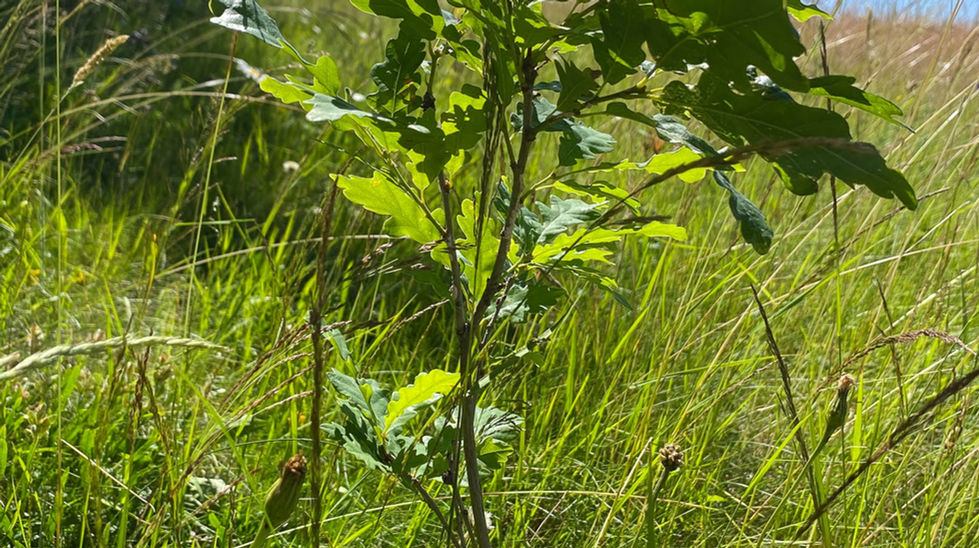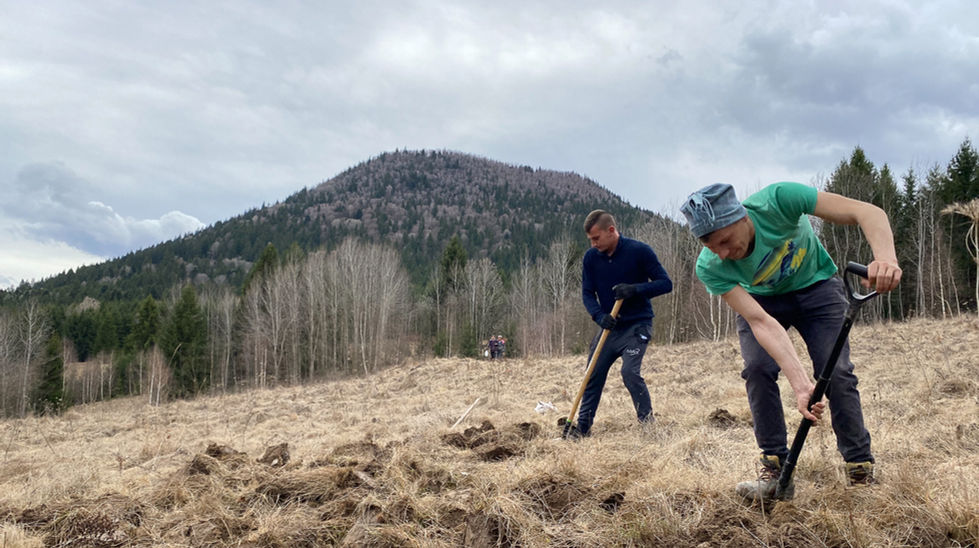Get in touch with us at office@transylmagica.com

Bear groves
Planting Fruit Forests
for Coexistence
We are planting mast-producing trees (oaks, Eurasian beech) and fruit-bearing trees (wild pear, crab apple, wild cherry, cherry plum) that bears will visit at the end of summer and the beginning of autumn in the coming years.
On those days, the bears will no longer need to search for food in the villages of the Eastern Carpathians.
In short, this is the purpose of these trees: to keep the bears fed in the forest and away from people.

Somehow, though, this topic is more complex and interesting than it first appears.
The fact that we are planting these fruit-bearing trees to benefit the bears raises a series of deeper questions and thoughts.
The Last of Europe’s Giants
The Brown bears (Ursus arctos) are among the last representatives of the once-great European megafauna. We have long since eradicated most of the large wild animals that once roamed Europe. Bears symbolize the wild and dangerous side of nature in our subconscious.
A Relationship of Contradictions
Our relationship with them is also extreme and varied, depending on the individual and their personal goals: they are large game animals that raid crops and livestock, valuable hunting trophies, protected natural assets, or problems that capture public attention and can be used to gain political capital—and this list could easily go on.
Our Belief
For us personally, they are creatures with as much right to life as we have or our domestic animals, which is why we want to contribute to facilitating coexistence with them.
What Bears Need
What they need most is food and suitable habitat. Most bears do everything they can to avoid us, whether in space or time.
Through this planting project, we hope to help ensure that during the autumn hyperphagia period, when they need food the most, as many bears as possible can access abundant food far from human settlements.
How Bear Groves Help
Through this planting project, we aim to ensure that during the critical autumn feeding season, bears have access to abundant food far from human settlements.
By planting native fruit- and mast-bearing trees, we hope to create forests that support both wildlife survival and peaceful coexistence.

Crab apple (Malus sylvestris), wild pear (Pyrus sylvestris), rowan (Sorbus aucuparia) and beech (Fagus sylvatica) seedlings planted on Ciomad Mountain and in the Hasmas Mountains in 2024 and 2025, along with some bears photographed by our camera traps placed around our planting sites.
Click on the image to open the slideshow.
Planting activities on the Ciomad and Hasmas Mountains.
Click on the image to open the slideshow.
Ciomad Mountain: https://maps.app.goo.gl/oLtZHuhRtieSU4dg9
Hasmas Mountain: https://maps.app.goo.gl/v8vbZZwams4GzqHa9








































